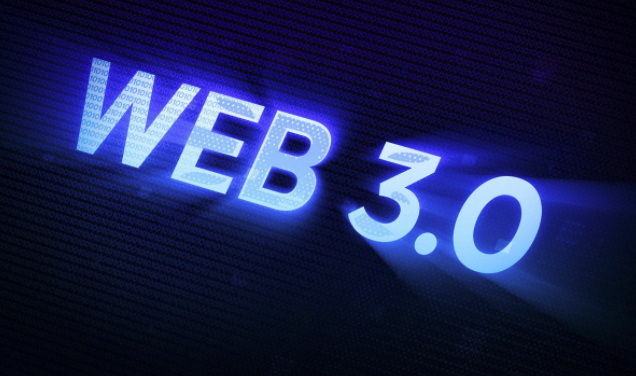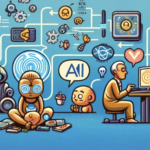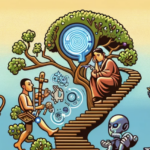
Web 3, also known as Web 3.0 or Web3, is the next generation of the internet.
Web3 is being built on top of decentralized technologies like the blockchain and peer-to-peer networking.
This new internet will be more secure, private, and censorship-resistant than the current one. Web3 will also enable new applications and services that are not possible with Web 2.0 technology.
Table of Contents
Web 3 Origins
The term “Web 3” was first coined by Tim Berners-Lee in 2006, though not in the context of a decentralized/blockchain-based web, which came later with Gavin Wood (Etherum co-founder) in 2014.
However, the concept of Web 3 has been around since the early days of the internet.
The original vision for the internet was a decentralized network where anyone could share information without fear of censorship or central control.
However, over time, the internet has become increasingly centralized, with a few large corporations controlling most of the traffic and content, such as Google (through search and YouTube) and Facebook.
Web 3, at least conceptually, is a return to the original vision for the internet, where power is decentralized and put back into the hands of users.
What is Web 3.0? (Explained with Animations)
Technologies behind Web 3
There are a few key technologies that are enabling Web 3.0:
The Blockchain
The blockchain is a distributed database that allows for secure, transparent, and tamper-proof transactions.
This technology is at the heart of Web 3.0, as it enables trustless interactions between parties without the need for a central authority.
Peer-to-Peer Networking
Peer-to-peer networking allows devices to connect directly with each other without going through a central server.
This decentralized architecture makes P2P networks more resistant to censorship and attacks.
Decentralized Storage
Decentralized storage solutions like IPFS and Filecoin provide an alternative to traditional centralized storage solutions like Amazon S3 or Dropbox.
With decentralized storage, files are spread out across a network of computers instead of being stored on a single server.
This makes it more resilient to attacks and censorship.
Web 3 Applications
There are already a number of Web 3 applications that are live or in development.
Some of the most popular include:
Ethereum: A decentralized platform that runs smart contracts (applications that run exactly as programmed without any possibility of fraud or third-party interference)
IPFS: A decentralized file-sharing network
Filecoin: A decentralized storage network
Brave: A Web browser that blocks ads and trackers by default
Status: A messaging app that lets you chat, make payments, and browse the decentralized web
Web 3.0 vs Web 2.0
Web 3.0 is often compared to Web 2.0, which is the current generation of the internet.
Web 2.0, which has been the state of the internet since about 2004, involves using the internet as a platform where people post content to forums and social media (e.g., Facebook, Twitter, YouTube).
This contrasts with Web 1.0 (roughly 1991 to 2004) where most websites on the internet were static and most people were content consumers instead of content creators.
Here are some key differences between the two:
Web 3.0 is decentralized while Web 2.0 is centralized
The technologies behind Web 3.0 are powered by a network of computers spread across the globe, while Web 2.0 technologies are powered by central servers.
This makes Web 3.0 more resistant to censorship and attacks.
Web 3.0 is private while Web 2.0 is public
The decentralized nature of Web 3.0 allows for more privacy, as data is not stored in central databases that can be accessed by governments or corporations.
In contrast, Web 2.0 technologies are typically public and can be easily accessed by anyone.
Web 3.0 is secure while Web 2.0 is vulnerable
The blockchain and other decentralized technologies powering Web 3.0 are much more secure than the centralized technologies powering Web 2.0.
This makes Web 3.0 a much safer place to store data and conduct transactions.
Web 3 will run in tandem with Web 2, just as Web 2 ran in tandem with Web 1.
Websites and blogs aren’t going anywhere. But Web 3 concepts are likely to become more popular among Web 2 sites to stay relevant.
Decentralized autonomous organizations (DAOs)
Decentralized autonomous organizations are a key concept in Web 3.0.
DAOs are organizations that are run by a decentralized network of computers instead of central authorities.
This allows for completely trustless interactions between parties, as there is no need for a third party to mediate or oversee transactions.
DAOs are made possible by smart contracts, which are programs that run exactly as programmed and cannot be tampered with. This makes them secure and trustworthy.
Non-fungible tokens (NFTs)
NFTs are considered part of a future in Web 3.0 under some conceptions.
NFTs are digital assets that are not interchangeable with other assets of the same type. This contrasts with fiat currency, which is interchangeable (e.g., one dollar is the same as any other dollar).
NFTs can be used to represent a wide range of physical and digital assets, including but not limited to:
- Artwork
- Real estate
- Domain names
- In-game items
The use of NFTs allows for the tokenization of any asset, which opens up a whole new world of possibilities for how we interact with the digital world.
Web 3 criticisms
Many have called Web 3 a buzzword.
Jack Dorsey, co-founder and former CEO of Twitter, has dismissed Web3 as a “venture capitalists’ plaything.”
Indeed, Web 3 technologies are often associated with ICOs (initial coin offerings), which have been criticized for being a way for startups to raise money without actually having a product.
Or even outright vaporware – promised future products that will never exist.
Others have criticized Web 3 for being too complicated and not something that a majority of internet users are into.
For example, if you’re on the internet to find information, does Web3 really fit into that?
But despite the criticisms, Web 3 represents a major shift in how we interact with the internet, and it is likely that the technologies behind it will become more prevalent in the years to come.
What’s Next for Web 3?
The development of Web 3 technology is still in its early stages, but it has already made a lot of progress in recent years.
The launch of Ethereum in 2015 was a major milestone for Web 3.0, as it showed that decentralized applications can be built on a blockchain platform.
Since then, a number of other Web 3.0 projects have been launched, and the technology continues to gain traction.
It’s still too early to say what the future holds for Web 3.0, but it’s clear that the technology has the potential to change the internet as we know it.


![Backwards 3: How to Type "Ɛ" [EASY]](https://softwareblade.com/wp-content/uploads/2022/02/Screen-Shot-2022-02-19-at-9.03.25-PM-150x150.png)